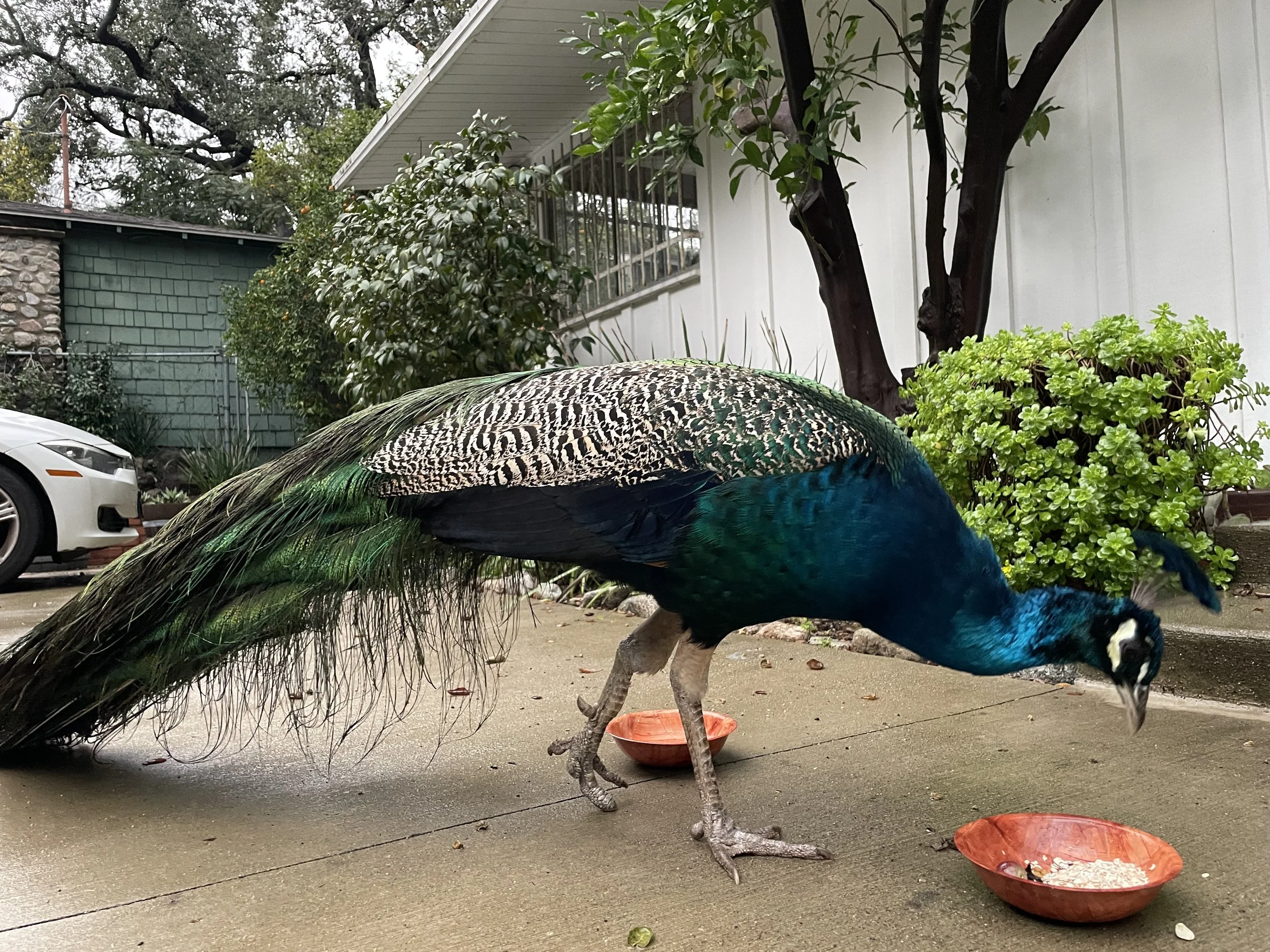
Frequently Asked Questions
Where did the peafowl in my neighborhood come from?
Most peafowl in America start out as pets and then either wander off or are dumped/abandoned by their owners. If left on their own, they will breed (even if it is a sibling pair) and start a feral flock. There are no peafowl native to the Americas.
What harm is there in allowing the peafowl to remain feral in my city?
There are many hazards to feral peacocks. Lack of veterinary care, lack of protection from predators and the elements, traffic collisions, and improper diets (often fed to them by well-meaning individuals) are just the start.
Some individuals don’t like the birds because they are too noisy or are damaging their property, etc. We have witnessed these individuals get so fed up with the peafowl that they intentionally hit them with their vehicle. We have also received X-rays of birds that have been shot.
When individuals feed the birds they often receive high fat diets. They also often do not exercise as much as they would out in the wild because their territory is limited by highways and other barriers. This combination can lead to a number of health problems.
A flock of peafowl in the wild generally consists of one or two males and a handful of females. Flocks in urban areas can consist of hundreds of birds sharing a smaller territory than even a small flock would normally occupy. This can lead to unhealthy, unnatural social dynamics. It is also not uncommon for all of these peafowl to be extremely closely related which leads to a lack of genetic diversity.
Are 100% of peafowl in an area removed, or just some of them?
Removal percentage is determined on a case by case basis. Some areas are safe enough for a small flock to persist.
Do peafowl cause property damage?
Yes, peafowl are known to scratch up the roofs of cars, dig up gardens, damage the roofs of houses, etc.
Can peafowl spread diseases like bird flu?
Peafowl are potential carriers/spreaders of avian influenza though in our experience this is rare. Our birds are put under quarantine once they enter our care before being introduced to their new homes.
Why aren’t the locations of the birds’ new homes made public?
These peafowl are adopted into loving private homes. Our adopters do not want the public showing up to their homes to visit the birds anymore than the average person would want old friends of their newly adopted dog to be given their home address so they could stop in unannounced for a visit. Our adopters have been inappropriately harassed in the past, so we must do what we can to protect their privacy.
Why do you charge for your services?
Our staff are highly trained, highly qualified professional animal handlers who must be compensated for their time and expertise. Veterinary care, food, housing, and many other expenses are also incurred each time we agree to take in any birds, and the number of birds in need continues to grow each year. We cannot afford to operate free of charge, but we can help suggest fundraising ideas.
Do peafowl ever attack people or other animals?
While it isn’t common, we have received reports of peacocks attacking people and pets.
Do all peafowl from one flock get rehomed to the same home?
When possible, birds from the same flock are rehomed together. However, due to the unnaturally large populations of many urban flocks, and in order to create better genetic diversity, it is not always possible or recommended to keep these flocks together. The exception we make is to not separate young chicks from their mothers which is why we do not typically secure female birds during the spring. These birds adapt very quickly to a new flock as long as all of their needs are being met.
How can I apply to adopt a flock of peafowl?
Email us at info@socalpeacockrescue.org
What do you look for when evaluating a potential home?
We consider many factors such as animal experience, property size, year-round weather conditions, etc.
How do I start an adoption inquiry?
Start an adoption inquiry by clicking HERE
